Records, Riots, and Rights
NCEI News Feed
https://www.ncei.noaa.gov/news/records-riots-and-rights
High-temperature records from the start of the Stonewall Uprising in defense of LGBTQ+ rights during June 28–July 3, 1969 still stand in New York City.
NCEI News Feed
https://www.ncei.noaa.gov/news/records-riots-and-rights
NCEI News Feed
https://www.ncei.noaa.gov/news/records-riots-and-rights
NCEI News Feed
https://www.ncei.noaa.gov/news/records-riots-and-rights
NCEI News Feed
https://www.ncei.noaa.gov/news/records-riots-and-rights
NCEI News Feed
https://www.ncei.noaa.gov/news/records-riots-and-rights
NCEI News Feed
https://www.ncei.noaa.gov/news/records-riots-and-rights
NCEI News Feed
https://www.ncei.noaa.gov/news/records-riots-and-rights
NCEI News Feed
https://www.ncei.noaa.gov/news/records-riots-and-rights
NCEI News Feed
https://www.ncei.noaa.gov/news/records-riots-and-rights
NCEI News Feed
https://www.ncei.noaa.gov/news/records-riots-and-rights
NCEI News Feed
https://www.ncei.noaa.gov/news/records-riots-and-rights
NCEI News Feed
https://www.ncei.noaa.gov/news/records-riots-and-rights
NCEI News Feed
https://www.ncei.noaa.gov/news/records-riots-and-rights
NCEI News Feed
https://www.ncei.noaa.gov/news/records-riots-and-rights
NCEI News Feed
https://www.ncei.noaa.gov/news/records-riots-and-rights
NCEI News Feed
https://www.ncei.noaa.gov/news/records-riots-and-rights
NCEI News Feed
https://www.ncei.noaa.gov/news/records-riots-and-rights
NCEI News Feed
https://www.ncei.noaa.gov/news/records-riots-and-rights
NCEI News Feed
https://www.ncei.noaa.gov/news/records-riots-and-rights
NCEI News Feed
https://www.ncei.noaa.gov/news/records-riots-and-rights
NCEI News Feed
https://www.ncei.noaa.gov/news/records-riots-and-rights
NCEI News Feed
https://www.ncei.noaa.gov/news/records-riots-and-rights
NCEI News Feed
https://www.ncei.noaa.gov/news/records-riots-and-rights
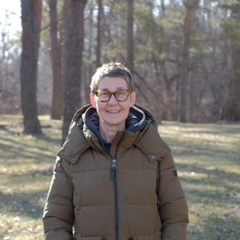
You can often find Linda enjoying the outdoors.
Living on the west side of Green Bay, Linda grew up around water. “It’s just a fundamental part of who I am,” she explained. But the water of her youth had such poor quality, she couldn’t wait to leave.
She recalls waterskiing on the Fox River in the 1970s. “It was green. Once it was entirely covered in slime. I don’t know what exactly that was, but we never did that again,” Linda said. “And you weren’t allowed to fish either. You couldn’t eat them.”
Family trips took her to Potawotomi, Sturgeon Bay, and the Wolf River, and she saw what clean water could look like. As an adult, she got her wish and moved away. She lived in Los Angeles, but made sure she was near the water. Eventually she made her way back to Green Bay, because this is where her family is.
Linda and her husband Alex settled down, building a business and having kids. “The longer we stayed,” she explained, “the more we cared about making sure we gave back to our state.” Linda didn’t want to leave anymore; she wanted to change it for the better.
“It started with Kavarna,” she said, talking about the restaurant she and Alex established. “The most sustainable thing you can do is to use what already exists.” And if you look around, you’ll notice that the decorative cubbies are a repurposed chicken coop. She and Alex also implemented composting with local farmers and insisted on using renewable energy – even when it cost a little more.
These days, sustainability looks like a mission to make the world’s first carbon-emissions-free hummus with their new business, uBu Foods. It was a no-brainer for Linda to register the business with 1% For the Planet.
As part of that registration, they had to select an environmental non-profit to partner with. “We wanted someone from Wisconsin,” said Linda. She found Fox-Wolf Watershed Alliance and “we immediately got involved. I love these people! It’s been really fun.”
Of course, it can also be a lot of work to put in the time and money to make sustainable choices. Why make that a priority? “Look at Wisconsin on a map,” Linda said. “It’s just blue. There’s so much water here. We care about where we live and the future of the next generation. Why wouldn’t you make it a priority!”
Linda’s kids are old enough to be thinking about their hopes for adulthood. And they’re not planning to leave the state. “It’s easy to live here. It’s affordable to live here,” she explained. “When I was a kid, I wanted to leave. Now I’m here and I’m invested.”
And if you ask her, she’ll tell you to get involved with Fox-Wolf for yourself. “Membership is affordable, and you can volunteer too,” she said. “It feels like a community of people who care about the state of Wisconsin and the environment. Do it, because it’s so easy!”
In Their Own Words
from the blog on ubufoods.com
The 1% for the Planet program is simple enough that the entire model fits in the name. You calculate 1% of your profits and contribute them through the organization to vetted, ecologically-minded non-profits. We love it.
1% for the Planet effectively puts a “floor” on a what a company is giving back to the natural environment that supports it. And once it’s on your packaging… let’s just say you’re disinclined to take it off.
One of the best things about the program is that you get to direct where your money goes from a list of approved non-profits. For us, the choice was an easy one. If we could sum up our hopes for our local ecology in one potential moment, we would love to enjoy wild rice grown on the Lower Fox someday. For that reason we chose Fox-Wolf Watershed Alliance.
Watershed Moments is a publication of Fox-Wolf Watershed Alliance, sharing the stories of how your donations have impacted lives in our community. Read our latest project updates, make a secure online donation, or become a member at www.fwwa.org
The post Watershed Moments: Here and Invested appeared first on Fox-Wolf Watershed Alliance.
Fox-Wolf Watershed Alliance
https://fwwa.org/2024/06/18/watershed-moments-here-and-invested/?utm_source=rss&utm_medium=rss&utm_campaign=watershed-moments-here-and-invested
Current watches, warnings, and advisories for Brown County (WIC009) WI
Current watches, warnings, and advisories for Brown County (WIC009) WI
https://api.weather.gov/alerts/urn:oid:2.49.0.1.840.0.96c473f5318ceed7a1b67ac5ba6be6266cd11919.001.1.cap

While gathering in Montreal recently, perhaps the Great Lakes region’s mayors took a page from urban planner Daniel Burnham’s playbook which said, “make no little plans.” From Burhham’s legendary Plan of Chicago.
At the mayors’ annual conference, the focus was on nothing less than an “economic transformation” in the Great Lakes and St.
Great Lakes Now
https://www.greatlakesnow.org/2024/06/canada-u-s-mayors-want-to-tap-great-lakes-regions-water-for-economic-transformation/
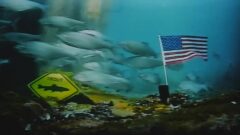
I Speak for the Fish is a monthly column written by Great Lakes Now Contributor Kathy Johnson, coming out the third Monday of each month. Publishing the author’s views and assertions does not represent endorsement by Great Lakes Now or Detroit PBS. Check out her previous columns.
Great Lakes Now
https://www.greatlakesnow.org/2024/06/i-speak-for-the-fish-whats-a-true-bass/
Area marinas might become a little cleaner thanks to a research grant issued by the Ohio Lake Erie Commission. Ohio Sea Grant is getting $49,998 for a marine debris prevention and removal program. The grant will, among other things, help support three case studies, one marine debris workshop, and five presentations or displays. Read the full story by The Toledo Blade.
Great Lakes Commission
https://www.glc.org/dailynews/20240617-cleaner-marinas
The Ohio Lake Erie Commission recently announced nearly $150,000 in Lake Erie Protection Fund Grants for three projects at the Commission’s meeting last week. The Lake Erie Protection Fund is supported by the Lake Erie license plate proceeds and tax-deductible donations. Read the full story by The News-Herald.
Great Lakes Commission
https://www.glc.org/dailynews/20240617-license-plates
Set sail on the Great Lakes this summer with Inland Seas. Inland Seas Education Association or ISEA, offers a unique educational sailing experience for people of all ages. The non-profit organization introduces students to hands-on learning on and around the Great Lakes through their public sail programs. Read the full story by WPBN-TV – Traverse City, MI.
Great Lakes Commission
https://www.glc.org/dailynews/20240617-inland-seas
A program launched in 2022 is taking the effort to clean up shorelines along the Great Lakes into a realm of high technology. Read the full story by The Herald Bulletin.
Great Lakes Commission
https://www.glc.org/dailynews/20240617-litter-drone
The Michipicoten, the freighter rescued in Lake Superior after water poured into a mysterious 13-foot gash in its hull last weekend, is forever tied to Cleveland. Originally named for a Clevelander, the 698-foot ore boat was once the largest vessel to ever sail the Cuyahoga River. Read the full story by The Plain Dealer.
Great Lakes Commission
https://www.glc.org/dailynews/20240617-cleveland-freighter
Pearl Seas Cruises will offer its biggest season ever on the Great Lakes this summer. The cruise line will offer four unique itineraries, visiting 16 ports of call, including a brand-new 14-night “Great Lakes Explorer” cruise. Read the full story by TravelPulse.
Great Lakes Commission
https://www.glc.org/dailynews/20240617-pearl-cruises
Lake Ontario has received a new designation as a National Marine Sanctuary and with it added protections and emphasis on its historic and cultural resources. Read the full story by Lockport Union-Sun & Journal.
Great Lakes Commission
https://www.glc.org/dailynews/20240617-marine-sanctuary
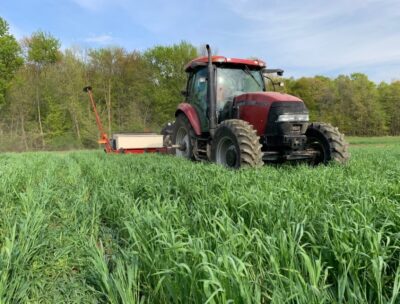
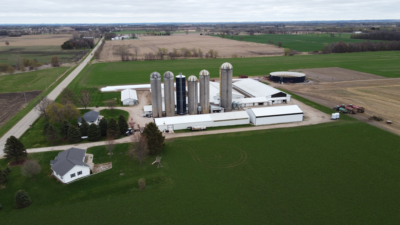
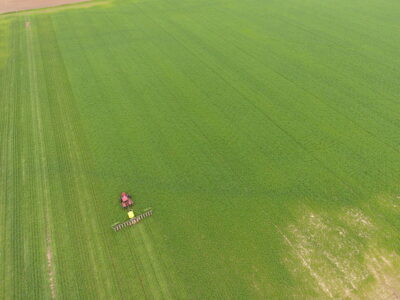
As the supply chain and consumers are looking for more sustainably produced products, understanding the environmental impacts of field management and having a tool to help communicate conservation efforts is important.
The Farm Progress Report utilizes data you most likely already collect to showcase the benefit your current and planned field management has on nutrient and sediment reduction to our local waterways and carbon capture resulting in reduced greenhouse gas emissions.
For producers enrolled in the Continuous Cover System, the SnapPlus database file will be requested after the first year of the contract period.
Producers are required to participate in 1 Farm Progress Report meeting but may be asked for additional meetings if needed to develop a quality report. Farm agronomists/crop consultants are high encouraged to participate in the meeting.
Farm Progress Report Meetings +$625 One-Time Incentive Payment

Phosphorus and Sediment Runoff Reduction
To measure and communicate benefits to local water quality made by conservation efforts on the farm, the Farm Progress Report team will pull data from SnapPlus, the Soil Nutrient Application Planner already used by Wisconsin farmers as part of their Nutrient Management Plan. To learn more about SnapPlus visit: https://snapplus.wisc.edu
Carbon
To estimate and communicate Greenhouse Gas reduction through carbon capture from field practices, the Farm Progress Report team will run COMET-Planner for your farm based on the field data within SNAPPlus. COMET-Planner utilizes emission reduction coefficients to generalize greenhouse gas emission from soils. The Farm Progress Report will be a good introduction to the impact conservation efforts can have on your farm. A more in-depth calculation tool may be required for farms interested in exploring carbon markets or required to track carbon for their supply chain. To learn more visit: http://comet-planner.com/
Ready to start farming Climate Smart? To begin enrollment, review the Conservation Planning & Farm Progress Report program requirements. When you are ready to enroll, move to Step 2- filling out the required paperwork. Simply download, fill out, and scan and email or mail to Fox-Wolf. Fox-Wolf Watershed Alliance will respond within 2 weeks upon receipt of application. Timeline is dependent upon verifying eligibility through USDA-FSA.
Step 1: Review Practice Requirements and Eligibility
Before filling out the required enrollment paperwork, please review the Farm Climate Smart program requirements and eligibility to determine if you qualify.
Program requirements and eligibility can be found in the Requirements and Eligibility document. If you have questions regarding eligibility, contact your County Land Conservation Department Climate Smart staff.
Step 2: Download and Fill Out Documents
To begin enrollment, download and fill out the Producer Application, Privacy Information Release Request, and Field Enrollment forms. To download, click the image and follow the download instructions prompted by your browser.
All documents may be filled-out online or by hand. Either way you decide to complete the application, the documents must be printed and signed and dated by hand.
General Requirements
*Fox-Wolf Watershed Alliance is not subject to Freedom of Information Act (FOIA) requests and will maintain control of SnapPlus files, including databases, reports, and maps. County Land Conservation staff will participate in Farm Progress Report meetings and review the associated field management, but the underlying data and associated files will not be shared electronically.
SnapPlus Requirements
Farms that are located within the 21 counties of the Fox-Wolf Basin (see map) are considered eligible. Farms located within the true boundaries of the Basin will receive priority over those that are not. Fox-Wolf reserves the right to decline enrollment from farms in counties outside the core (Brown, Calumet, Fond du Lac, Outagamie, Shawano, Waupaca, Waushara, and Winnebago) watershed boundaries. Some additional requirements apply, see section above. Contact County Land Conservation Climate Smart staff to determine eligibility.
USDA is investing more than $3.1 billion for 141 projects through this effort and all the projects require meaningful involvement of small and underserved producers.”
-USDA
No, farms of all sizes are considered eligible. Farms that are able to enroll 100+ acres will have priority for the Continuous Cover System, but funding is available for smaller farms and homesteads looking to implement sustainable practices.
Technical support to assist with FSA enrollment is available, through this program, by Wisconsin Farmers Union.
Project Management
Katie Woodrow
(920) 915-5767
┃katie@fwwa.org
Tim Burns
(920) 841-0104
┃tim@fwwa.org
Dedicated County Land Conservation Climate Smart staff are located in 8 counties throughout the Fox-Wolf Basin. Contact the staff person in the county nearest to you to determine program eligibility and to begin enrollment.
Brent Levash
(920) 391-4620
┃brent.levash@browncountywi.gov
Autumn Gomez-Tagle
(920) 849-1493
┃autumn.gomeztagle@calumetcounty.org
Justin Loehrke
(920) 414-0096
┃justin.loehrke@fdlco.wi.gov
Andy Kiefer
(920) 832-5073
┃andy.kiefer@outagamie.org
Bill Koepke
(715) 526-4620
┃bill.koepke@shawanocountywi.gov
Stefan Stults
(715) 258-6245
┃stefan.stults@co.waupaca.wi.us
Kaylee Overby
(920) 787-0443
┃kaylee.overby@wausharacountywi.gov
Eric Bertram
(920) 232-1958
┃ebertram@winnebagocountywi.gov
Need help enrolling? Maybe a question about eligibility? Confused about program requirements?
Fill out the Contact Us form and we will get back to you as soon as we can!
The post Conservation Planning and the Farm Progress Report appeared first on Fox-Wolf Watershed Alliance.
Fox-Wolf Watershed Alliance
https://fwwa.org/2024/06/17/conservationplanning/?utm_source=rss&utm_medium=rss&utm_campaign=conservationplanning
E.M.I.L.Y. is a remote-controlled robot that zips over waves to help struggling swimmers, which is being introduced on a pair of Lake Michigan beaches this summer. Supporters of the technology say it could save lives. Read the full story by MLive.
Great Lakes Commission
https://www.glc.org/dailynews/20240617-rescue-robot
The oldest freighter still active on the Great Lakes arrived on the Saginaw River on Friday after departing Detroit on Thursday morning. The SS Alpena is a 519-foot cement carrier built in 1942. Read the full story by MLive.
Great Lakes Commission
https://www.glc.org/dailynews/20240617-oldest-freighter
With summer just around the corner and a heat wave predicted for Michigan, there’s no better time for a trip to the beach. The Berrien County, Michigan, sheriff’s office shared several tips for beach goers to keep them safe. Read the full story by MLive.
Great Lakes Commission
https://www.glc.org/dailynews/20240617-beach-safety
Wisconsin Water Library
https://waterlibrary.aqua.wisc.edu/the-recently-discovered-shipwrecks-of-the-great-lakes/
Commercial fishing on the Great Lakes began 150 years ago, and fishermen once numbered in the thousands. Now, only a handful of businesses are still at it, and many are aging out. Read the full story by Spectrum News 1.
Great Lakes Commission
https://www.glc.org/dailynews/20240614-fishing-workforce
Several government, labor and science leaders are calling on Illinois Governor J.B. Pritzker to sign an agreement to keep invasive carp from spreading to the Great Lakes. July 1 is the deadline for Illinois, Michigan and the U.S. Army Corps of Engineers to sign the Protect Partnership Agreement. Read the full story by WBBM – Chicago, IL.
Great Lakes Commission
https://www.glc.org/dailynews/20240614-carp-protection
Mayflies and walleyes are species scientists use as an indicator of lake health; good populations of both normally indicate healthy Lake Erie water conditions. Read the full story by WTOL-TV – Toledo, OH.
Great Lakes Commission
https://www.glc.org/dailynews/20240614-indicator-species
A beef farmer from Michigan is the first to be shut down by state standards of acceptable PFAS in biosolids. The farmer is now one of many across the country threatening to sue the U.S. EPA because the farm’s fertilizer was both approved and recommended for use on the farm by EPA. Read the full story by Great Lakes Now.
Great Lakes Commission
https://www.glc.org/dailynews/20240614-pfas-litigation
For the first time in its history, the Sault Ste. Marie Tribe of Chippewa Indians opened its walleye fish hatchery to the public. People were invited to learn about walleye rearing efforts as the fishery’s staff prepare to transport and release upwards of one million walleye fingerlings into nearby lakes and streams. Read the full story by WWTV-TV – Cadillac, MI.
Great Lakes Commission
https://www.glc.org/dailynews/20240614-walleye-hatchery
Two neighborhoods in Buffalo Grove, Illinois, will soon have access to Lake Michigan water, eliminating the current well-water system. Lake County Board officials said the aging well system would have been more expensive to repair than connecting the neighborhoods to lake water. Read the full story by WBBM-TV – Chicago, IL.
Great Lakes Commission
https://www.glc.org/dailynews/20240614-water-source
The Great Lakes Maritime Heritage Center in Alpena, Michigan, offers tours of ‘Shipwreck Alley,’ enabling participants to view nearly one hundred shipwrecks in the Thunder Bay National Marine Sanctuary in Lake Huron. Read the full story by WPBN-TV – Traverse City, MI.
Great Lakes Commission
https://www.glc.org/dailynews/20240614-shipwreck-tour
Cenovus Energy, in partnership with the University of Minnesota-Duluth and the University of Toledo, will invest $100,000 for research on the effects of ice cover in Lake Superior and Lake Erie, including its effects on harmful algae blooms. Read the full story by KQDS-TV – Duluth, MN.
Great Lakes Commission
https://www.glc.org/dailynews/20240614-ice-research
After a quarter century, the Conservation Resource Alliance has completed its “Free Spanning the Maple River” initiative. From beginning to end, all infrastructure such as dams and culverts have been removed from the Maple River in northern Michigan to allow for an entirely free flowing river. Read the full story by the Petoskey News-Review.
Great Lakes Commission
https://www.glc.org/dailynews/20240614-river-flow
The Ohio Department of Health reported that Multiple Lake Erie beaches in Northeast Ohio were put under a bacteria contamination advisory this week, which indicates the level of bad bacteria in the water has reached unsafe levels and could make you sick. Read the full story by WJW-TV – Cleveland, OH.
Great Lakes Commission
https://www.glc.org/dailynews/20240614-bacteria-advisory
NOAA Great Lakes Environmental Research Laboratory
NOAA Great Lakes Environmental Research Laboratory
https://noaaglerl.blog/2024/06/14/glerl-scientist-represents-noaa-and-the-great-lakes-on-new-national-ocean-biodiversity-strategy/